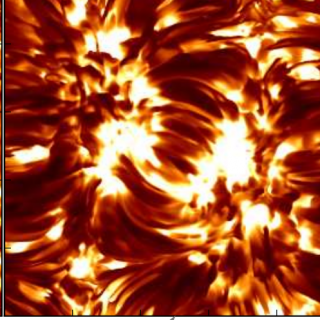Bibcode
Asensio Ramos, A.; Díaz Baso, C. J.
Referencia bibliográfica
Astronomy and Astrophysics, Volume 626, id.A102, 18 pp.
Fecha de publicación:
6
2019
Revista
Número de citas
60
Número de citas referidas
56
Descripción
Context. Spectropolarimetric inversions are routinely used in the field
of solar physics for the extraction of physical information from
observations. The application to two-dimensional fields of view often
requires the use of supercomputers with parallelized inversion codes.
Even in this case, the computing time spent on the process is still very
large. Aims: Our aim is to develop a new inversion code based on
the application of convolutional neural networks that can quickly
provide a three-dimensional cube of thermodynamical and magnetic
properties from the interpreation of two-dimensional maps of Stokes
profiles. Methods: We trained two different architectures of
fully convolutional neural networks. To this end, we used the synthetic
Stokes profiles obtained from two snapshots of three-dimensional
magneto-hydrodynamic numerical simulations of different structures of
the solar atmosphere. Results: We provide an extensive analysis
of the new inversion technique, showing that it infers the
thermodynamical and magnetic properties with a precision comparable to
that of standard inversion techniques. However, it provides several key
improvements: our method is around one million times faster, it returns
a three-dimensional view of the physical properties of the region of
interest in geometrical height, it provides quantities that cannot be
obtained otherwise (pressure and Wilson depression) and the inferred
properties are decontaminated from the blurring effect of instrumental
point spread functions for free. The code, models, and data are all open
source and available for free, to allow both evaluation and training.
Proyectos relacionados

Magnestismo Solar y Estelar
Los campos magnéticos son uno de los ingredientes fundamentales en la formación de estrellas y su evolución. En el nacimiento de una estrella, los campos magnéticos llegan a frenar su rotación durante el colapso de la nube molecular, y en el fin de la vida de una estrella, el magnetismo puede ser clave en la forma en la que se pierden las capas
Tobías
Felipe García

Magnetismo, Polarización y Transferencia Radiativa en Astrofísica
Los campos magnéticos están presentes en todos los plasmas astrofísicos y controlan la mayor parte de la variabilidad que se observa en el Universo a escalas temporales intermedias. Se encuentran en estrellas, a lo largo de todo el diagrama de Hertzsprung-Russell, en galaxias, e incluso quizás en el medio intergaláctico. La polarización de la luz
Ernest
Alsina Ballester